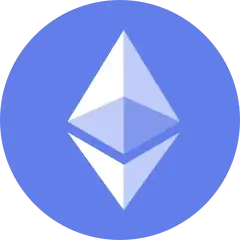Ethereum Blockchain Explained: How It Works, Its Features, Uses and More

What is Ethereum?
Ethereum is a decentralized, open-source, blockchain system that features its own cryptocurrency with shrewd agreement usefulness. Ether is the neighborhood computerized money off the stage. Among computerized monetary standards, Ether is second to Bitcoin in market capitalization. Ethereum was imagined in 2013 by software engineer Vitalik Buterin.
What is blockchain?
Blockchain is a technique for recording data that makes it bothersome or difficult to change, hack, or cheat the framework. Each square in the chain contains various exchanges, and each time another exchange happens on the blockchain, a record of that exchange is added to each part’s record.
How Does Ethereum Blockchain Work?
Like all cryptographic types of cash, Ethereum works on the reason of a blockchain network. A blockchain is a decentralized, scattered openly available report where all trades are affirmed and recorded.
It’s sca ttered as in everyone checking out the Ethereum network holds an unclear copy of this record, permitting them to see each past trade. It’s decentralized in that the association isn’t worked or managed by any bound together component—taking everything into account, it’s directed by all of the spread record holders.
ttered as in everyone checking out the Ethereum network holds an unclear copy of this record, permitting them to see each past trade. It’s decentralized in that the association isn’t worked or managed by any bound together component—taking everything into account, it’s directed by all of the spread record holders.
Blockchain trades use cryptography to keep the association getting and actually taking a look at trades. People use PCs to “mine,” or handle complex mathematical conditions that avow each trade on the association and add new squares to the blockchain that is at the center of the structure. Individuals are remunerated with computerized cash tokens. For the Ethereum structure, these tokens are called Ether (ETH).
Ether can be used to exchange work and items, like Bitcoin. It’s similarly seen speedy additions in cost over late years, making it a genuine hypothetical endeavor. However, what’s exceptional with respect to Ethereum is that customers can build applications that “run” on the blockchain like programming “runs” on a PC. These applications can store and move individual data or handle complex financial trades.
Ethereum Features
- Ether: This is Ethereum’s cryptographic money.
- Shrewd agreements: Ethereum permits the turn of events and organization of these.
- Ethereum Virtual Machine: Ethereum gives the basic innovation—the engineering and the product—that comprehends shrewd agreements and permits you to associate with it.
- Decentralized applications (Dapps): Ethereum permits you to make combined applications, called decentralized applications. A decentralized application is known as a Dapp (moreover spelled DAPP, App, or DApp) for short.
- Decentralized independent associations (DAOs): Ethereum permits you to make these for popularity-based navigation.
These are the fundamental highlights of Ethereum and prior to diving deep into the Ethereum instructional exercise, how about we examine every one of these elements in more detail.
Read | Top 6 Best Crypto Exchanges in India to Buy & Sell Bitcoin and Other Cryptocurrencies
Ethereum Real-life Uses
1. Decentralized finance (Defi)
One of the most encouraging true use cases for Ethereum is decentralized money applications, likewise frequently shortened as “Defi”. This incorporates savvy contract-controlled credits, the printing of stablecoins, and decentralized trades. One striking venture in this classification is “MakerDAO”, which using elaborate Ethereum brilliant agreements have empowered the production of a stablecoin (DAI) that is supported by Ether and is consistently worth $1.
2. Digital identity
Ethereum empowers the check of information in an open and straightforward manner, which implies that it could likewise be utilized to spearhead the formation of a computerized distinguishing proof framework. Organizations like Civic have understood this potential almost immediately and are as of now dealing with getting this going.
3. Tokenizing real-world assets
Many anticipate that the security token market should be multi-trillion freedom, and Ethereum could end up being one of the stages empowering this shift. Basically, security tokens are a blockchain-based portrayal of true resources like stocks, valuable metals, land, and that’s only the tip of the iceberg. By tokenizing these resources on a blockchain, guarantors can move and execute in them a lot simpler than assuming they just had an authoritative portrayal on paper.
4. Health applications
Ethereum will totally change the medical services framework. All medical clinics all over the planet can store, access, and offer their patient’s records. This is a vital element in growing new antibodies for viral episodes, or in any event, forestalling them firsthand. You can go to a specialist in Thailand for a test when you are on vacation and to a medical clinic in New York when you are back home once more, and both will have similar data about you.
5. Payments
The world’s economy depends on exchanges… And Ethereum will transform them until the end of time. On Ethereum, supposed “savvy contracts” can be made. These make it conceivable to trade anything of significant worth, totally hazard-free. Rather than making an old-fashioned settlement on paper, the exchange is recorded in PC code.
Read More
- Bitcoin Mining: How to Mine Bitcoin to earn money online?
- Top 10 Metaverse Stocks To Invest Now For The Future Of Technology
- How to Buy and Sell NFT in India
Wrapping Up – Ethereum Blockchain
Overall one thing is to be noticed that this article is about the simplified Ethereum blockchain technology. And judging from the technological perspective there has a broad future in sense of global scientific enhancement whether or whether not market cap or volume doesn’t makeup because their technology has a huge difference from the classic currency.
